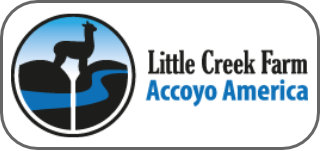- This experiment was designed to compare different varieties and harvest time of sorghum hydroponic fodder based on nutrient content and biomass production. Experimental design for fodder productivity was completely randomized design with 2 x 3 factorial, i.e., sorghum varieties (KD 4 and Super-1) and time of harvesting the sorghum hydroponic fodder (8, 12 and 16 d). Total biomass and DM production, were affected significantly (p < 0.05) on harvest time. Total biomass and nutrient content were increased in longer harvest time. The nutrient content were increased with decreasing total value of DM. Super-1 varieties harvested at 12 d had a good quality of fodder and it can be alternative of technology providing quality forage and land saving with a short time planting period and continuous production. more »
- A fact sheet on sprouted barley. more »
- Dog gone it's hot! This is expected in our Central Valley at this time of year, but when heat waves hit, it's important to be prepared with good irrigation management practices in alfalfa hay production. Can alfalfa tolerate extreme heat? The short answer is 'yes'. Alfalfa is originally from the Middle Eastern regions of Turkey, Iran, and Central Asia, so it is well adapted to hot, dry conditions. It's also routinely grown in the hot deserts of Arizona, Southern California and Mexico. more »
- Yikes, my weed control didn't work! It's springtime and you're looking at your seedling alfalfa field that you planted late last fall. You have a great stand, but you're not quite satisfied with the level of weed control despite an earlier herbicide application. You still see weeds out there, including bristly oxtongue, thistles, mustard, dandelion, and fiddleneck. You know that weed infestations can weaken young alfalfa plants, retard growth, delay the first cutting, reduce quality, and result in long term damage to crop yield and stand persistence. The field is still a seedling stand, considered as such until at least the first hay cutting (around the 6-9 leaf stage and a crown is forming). The plants in your stand are only 3-6 inches tall and you see some new, late germinating seedlings that you want to keep, perhaps delayed by the lack of rain and long, dry, cold spell last winter. The field is not Roundup Ready and you're looking for some post-emergent herbicide options. What should you use? more »
- Describing the genotype of some simply-inherited traits in an individual animal can be straightforward — horned cattle are always ‘pp’, and looking at an Andalusian chicken will tell you if it is ‘BB’ (black), ‘Bb’ (slate-blue) or ‘bb’ (white). We know the exact alleles carried, and in which proportions. When it comes to describing the genotype of a population however, we refer to gene and genotypic frequencies instead. more »
